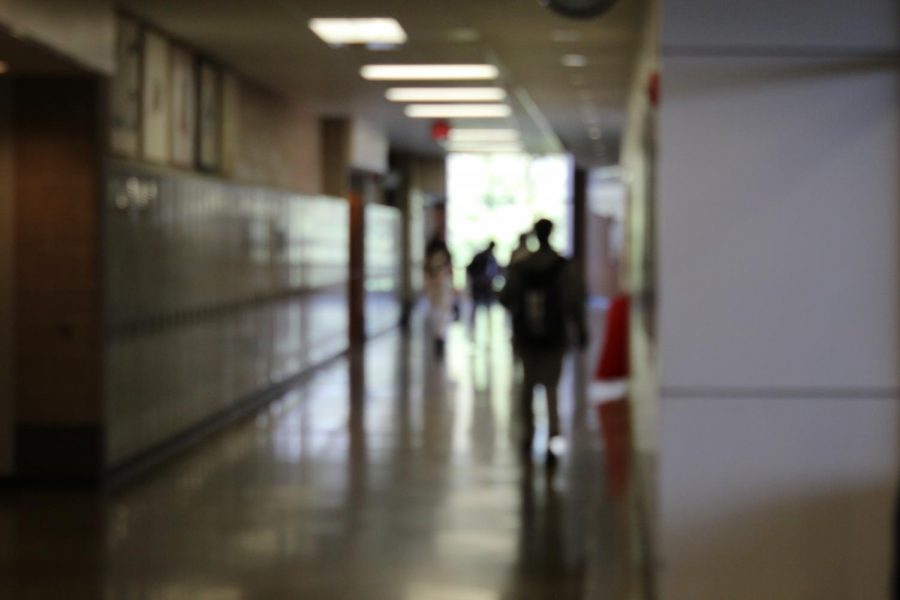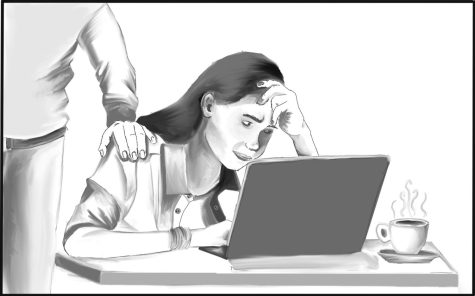The Struggle to Return to Normal
How COVID-19 Impacted Our Mental Health
Teens have experienced increased anxiety, depression and stress due to the pandemic.
As students returned to in-person learning for the 2021-2022 school year, BHS faculty members observed teenagers coming back to school facing greater mental health struggles than those exhibited prior to the pandemic.
“People who weren’t anxious before the pandemic became anxious during the pandemic, people who weren’t depressed before the pandemic became depressed,” SAY counselor Heidi Tolchinsky said.
While vaccines have become available to all who meet the criteria, and COVID-19 restrictions have eased from last year, enabling a return to in-person learning and resumption of extracurricular activities, there is still an overcast of struggles that students face as they try to return to post-pandemic life.
“[I feel] anxious, honestly; it’s been kinda hard coming back to normal after two years,” senior Nadia Hall said. “I was so used to staying at home and being comfortable, and I had to readjust.”
BHS students are not alone in this struggle. The mental health of students worldwide has suffered as a result of the pandemic. The past year of solitude, relationship conflicts, the death of loved ones, employment uncertainty, lack of socialization and increased social media use has impacted teenagers’ mental health.
A study review of 16 studies published in March 2021 by the International Journal of Environmental Research and Public Health found that adolescents of varying backgrounds experienced increased anxiety, depression and stress due to the pandemic.
Another study published in the Sept. 2021 issue of the journal Pediatrics indicates a rise in both depression and suicidal ideation among teens.
Psychological effects: Social Isolation
Last year’s isolation caused some students to feel stuck in a haze of ‘COVID time,’ in which motivation to do school work or any school-related material was the least of students’ worries.
“Being remote and not being in school all day caused more isolation,” Tolchinsky said. “It caused a lack of motivation.”
One junior who wished to remain anonymous felt this deeply.
“I’ve been in such a slump recently, and it’s hard to regain motivation,” they said.
Since March 2020, Beachwood students have attended school in various ways. In March to May 2020, school was entirely remote and self-directed with assignments posted weekly.
Then last fall, BHS implemented hybrid instruction in which students attended half online school and half in-person.
As COVID rates spiked in Northeast Ohio around Thanksgiving last year, the school went fully remote, along with most other schools in the area.
Meanwhile, some students elected to learn remotely for the entire school year, meaning that they did not see friends or teachers in person at all.
This isolation that students faced last year has no doubt caused students to struggle to regain stamina and motivation for this current school year.
Psychological Effects: Anxiety
On May 12, 2021, Ohio Governor Mike Dewine rescinded health restrictions.
“‘It’s time to end the health orders… It’s been a year. You’ve followed the protocols. You’ve done what we’ve asked. You’ve bravely fought this virus,” Dewine said in a May 12, 2021 announcement.
Ohioans were astonished with something most of us had forgotten: the excitement of returning to normal. People all around the United States experienced the same feelings since Dewine’s change of directives was in line with President Biden’s. Yet that also caused a lot of anxiety for students—especially since the Covid-19 rates were beginning to rise again just as students returned to school in person.
“This year, because it’s been so long since everybody was in the building, there was a lot of anxiety about coming back,” Tolchinksy said.
BHS counselor Jason Downey explained that the year and a half of isolation caused students to adapt to the at-home learning environment.
At home, students didn’t have regular interaction with peers. So when students had to return, many students experienced anxiety about returning to school and having to do “everyday” high school things, such as walking the halls.
“I see kids struggling to interact socially on all different levels… when you combine COVID and social media… I really worry that [social media] is a very scary thing for you all to have,” Tolinchinsky said.
Atrophied Skills: Social
Social interaction is critical to adolescent development, and many students have had little to no physical interaction with anyone except our families; this has caused many to lose or fail to develop social skills that we would have otherwise been practicing every day.
“Students really lack social skills and that wasn’t always the case, but it is now,” Tolinchinsky said.
Some students have developed fear of striking up a simple conversation.
The high school experience is critical for social-emotional development as there is a routine and regular social interaction with peers, but when students go online, they lose that structure, which both Downey and Tolinchinsky emphasized is important to healthy development.
Students Need Structure
Last year students’ schedules varied from completely online to hybrid learning.
Downey explained that when students had to attend school online, much of the time, they did not have to wake up and get ready for school; instead, they could stay in bed and log into school through a virtual class through Google Meet. These students lacked the structure necessary to thrive.
“It was really hard to do what you needed to do because you didn’t have that structure of being in school all day,” Tolchinsky said.
While parents usually stayed home with younger children, most high school students had to struggle on their own.
“It’s tough when you have so many variables going on, whether it’s mom, dad working or not working, siblings, all that impact your online learning,” Downey said.
As a result, the unstructured schedule and the many variables at home caused many students’ mental health to decline rapidly.
Downey explained that through the last year and a half, students suffered because they could not participate in the sports and activities that they had in years prior. Furthermore, they were not able to connect and socialize with each other in person, and that resulted in many students finding themselves in a dark place.
“Our students wanted to be among their peers to socialize and participate in sports and activities,” Downey said.
Since resuming in-person classes and activities, many of these students have seen improvement.
“I’ve had numerous students tell me, ‘I’m so happy to be in a better place now because I’m not at home working, and I’m not in a dark place because I’m with my peers,’” he said.
Long-Term Effects
It is also important to realize that most students did not get interaction with peers outside of school either and only had their families to interact with.
Teenagers need each other to be one another’s outlet. Numerous psychologists believe that COVID-19’s side effects, such as prolonged confinement during quarantine, will have long-term consequences for this generation’s mental health.
In a 2003 study published in the journal Pediatrics, John T Cacioppo and Louise C Hawkley studied the effects of social isolation. They found that the effects can be physical as well as mental.
“[Socially isolated individuals] were also more likely to report passively coping with stressors, and to show greater vascular resistance, a mechanism of blood pressure control previously associated with passive coping and a risk factor for hypertension,” the study found.
As a result of the physical impacts that isolation causes, Cacioppo and Hawkley emphasized that the natural conduits of human expression and enjoyment become clogged, causing mood and subjective well-being to suffer.
Now people around the world have been facing these symptoms.
BHS counseling staff emphasizes that students need to reach out if they need help.
“Never be scared to ask for help if you are mentally struggling,” Tolchinsky said.
“We are all in this together,” Downey said.

Lana Lagman (she/her) began writing for the Beachcomber in the fall of 2020. She likes to cover stories concerning mental health, diversity and new medical/scientific...

Hiba Z. Ali began writing for the Beachcomber in fall of 2019. She covers diversity in the school. In addition to writing for the Beachcomber, she also...













